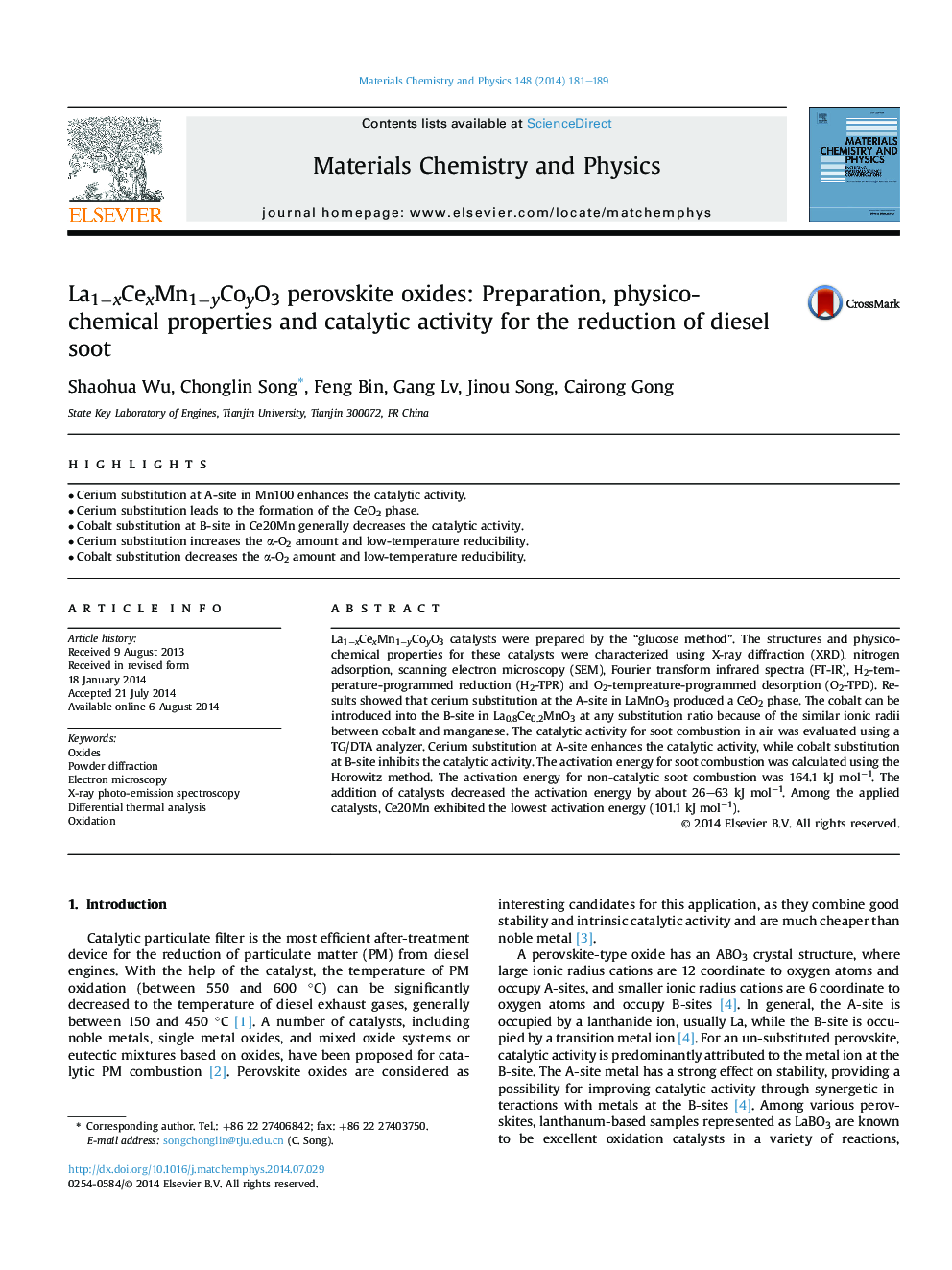| کد مقاله | کد نشریه | سال انتشار | مقاله انگلیسی | نسخه تمام متن |
|---|---|---|---|---|
| 1521728 | 1511814 | 2014 | 9 صفحه PDF | دانلود رایگان |

• Cerium substitution at A-site in Mn100 enhances the catalytic activity.
• Cerium substitution leads to the formation of the CeO2 phase.
• Cobalt substitution at B-site in Ce20Mn generally decreases the catalytic activity.
• Cerium substitution increases the α-O2 amount and low-temperature reducibility.
• Cobalt substitution decreases the α-O2 amount and low-temperature reducibility.
La1−xCexMn1−yCoyO3 catalysts were prepared by the “glucose method”. The structures and physico-chemical properties for these catalysts were characterized using X-ray diffraction (XRD), nitrogen adsorption, scanning electron microscopy (SEM), Fourier transform infrared spectra (FT-IR), H2-temperature-programmed reduction (H2-TPR) and O2-tempreature-programmed desorption (O2-TPD). Results showed that cerium substitution at the A-site in LaMnO3 produced a CeO2 phase. The cobalt can be introduced into the B-site in La0.8Ce0.2MnO3 at any substitution ratio because of the similar ionic radii between cobalt and manganese. The catalytic activity for soot combustion in air was evaluated using a TG/DTA analyzer. Cerium substitution at A-site enhances the catalytic activity, while cobalt substitution at B-site inhibits the catalytic activity. The activation energy for soot combustion was calculated using the Horowitz method. The activation energy for non-catalytic soot combustion was 164.1 kJ mol−1. The addition of catalysts decreased the activation energy by about 26–63 kJ mol−1. Among the applied catalysts, Ce20Mn exhibited the lowest activation energy (101.1 kJ mol−1).
Journal: Materials Chemistry and Physics - Volume 148, Issues 1–2, 14 November 2014, Pages 181–189